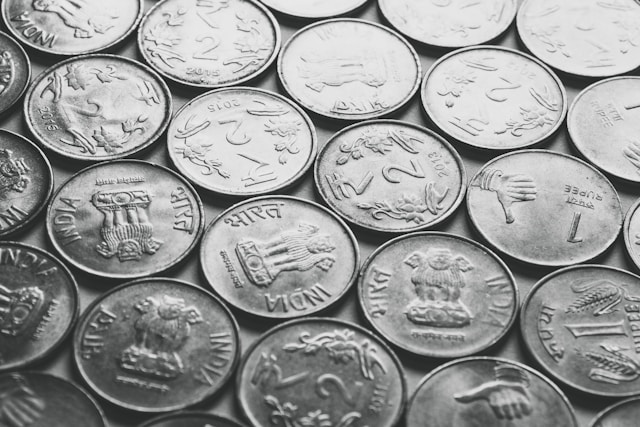Asia offers a diverse range of travel experiences, from bustling cities and ancient temples to tropical coastlines and mountain treks. But with each destination comes a different currency, making it essential for Australians to understand how to pay, exchange, and budget effectively while travelling.
Unlike Europe’s eurozone, Asia has no shared currency. Each country maintains its own monetary system, with differing levels of cash usage, digital payments, and foreign exchange availability. This guide explores key regional currencies, exchange advice, and tools to help you manage money with confidence throughout your journey.
Common Currencies in Popular Asian Destinations
Travellers to Asia will encounter a wide variety of local currencies, each with unique denominations, designs, and exchange values against the Australian dollar. Here are some of the most frequently used:
-
Japan (Japanese Yen – JPY): Widely used and accepted, the yen features high-denomination banknotes and is supported by ATMs that accept international cards.
-
Vietnam (Vietnamese Dong – VND): A high-number, low-value currency where 10,000–500,000 VND notes are common for everyday purchases.
-
Singapore (Singapore Dollar – SGD): Strong and stable, the Singapore dollar is accepted for digital and card payments nearly everywhere.
-
Indonesia (Indonesian Rupiah – IDR): Known for its large numerical denominations, cash is often used for small transactions.
-
Malaysia (Malaysian Ringgit – MYR): Malaysia’s colourful currency is widely used, with both cards and cash accepted in most areas.
-
Cambodia (Cambodian Riel – KHR): Although the riel is the official currency, US dollars are commonly accepted, especially in tourism areas.
-
Laos (Laotian Kip – LAK): Mostly cash-based, the kip is required for local transactions, though Thai baht and US dollars are sometimes used.
-
Nepal (Nepalese Rupee – NPR): Cash remains king in Nepal, especially in rural areas, although ATMs are available in major cities.
-
Sri Lanka (Sri Lankan Rupee – LKR): Tourists are encouraged to use the local currency, particularly outside urban centres.
-
Jordan (Jordanian Dinar – JOD): Though not geographically in East Asia, Jordan is a common stop on Middle East–Asia itineraries. The dinar is one of the strongest currencies in the region.
Currency Exchange Tips for Australians in Asia
Currency exchange services are widely available in Asia, particularly in airports, hotels, banks, and authorised money changers. However, exchange rates and fees vary considerably, so it’s important to compare providers before converting large amounts of money. In general, avoid exchanging currency at airports unless necessary, as rates are often less favourable.
Withdrawing cash from ATMs using a travel card or international debit card is a popular choice for Australians, especially in urban areas. To avoid high withdrawal fees, consider cards with no foreign transaction charges. Carrying a small amount of AUD for emergencies and converting it as needed can also be helpful.
In many Asian countries, especially in rural areas, cash is preferred—even for accommodation and transport. While contactless and mobile payments are becoming more common, they are not universally accepted across the region.
Planning for Multi-Country Travel in Asia
If your itinerary includes multiple countries, managing different currencies can be more complex. Consider these strategies for handling multiple currencies on one trip:
-
Use a multi-currency travel card that supports locking in exchange rates
-
Research ATM access and preferred card networks (Visa, Mastercard, UnionPay) by country
-
Download currency converter apps to track live exchange rates
-
Label envelopes or pouches for each country to keep currencies organised
-
Convert excess currency before leaving a country to avoid leftover bills or coins
-
Know the legal limits on cash you can bring in or take out of each country
What to Know About Currency Safety and Security
When dealing with cash in unfamiliar settings, basic precautions can help you avoid loss or theft:
-
Carry only what you need for the day
-
Use hotel safes for storing larger sums
-
Keep backup cards in a separate location
-
Use money belts or anti-theft bags in busy areas
-
Be cautious at ATMs—use machines inside banks when possible
-
Count and verify exchanged cash before leaving the counter
For more insights into global currency use and exchange strategies, visit the Remitly Currency Blog.
FAQ: Currency in Asia
1. Do all Asian countries use the same currency?
No. Each country typically uses its own national currency, and exchange rates differ widely across the region.
2. Can I use Australian dollars in Asia?
Generally no. While some tourist areas may accept AUD or USD, it’s best to use the local currency for better acceptance and pricing.
3. Are ATMs reliable in Asia?
Yes, in most cities. However, in rural or remote areas, ATM access may be limited, and cash is often necessary.
4. What’s the best way to exchange money while travelling in Asia?
Using a no-fee international travel card or withdrawing from reputable ATMs typically offers the best combination of convenience and value.
5. Is it better to exchange currency before leaving Australia or after arriving in Asia?
You can bring some local currency with you, but you’ll often get better rates by exchanging or withdrawing cash upon arrival.
